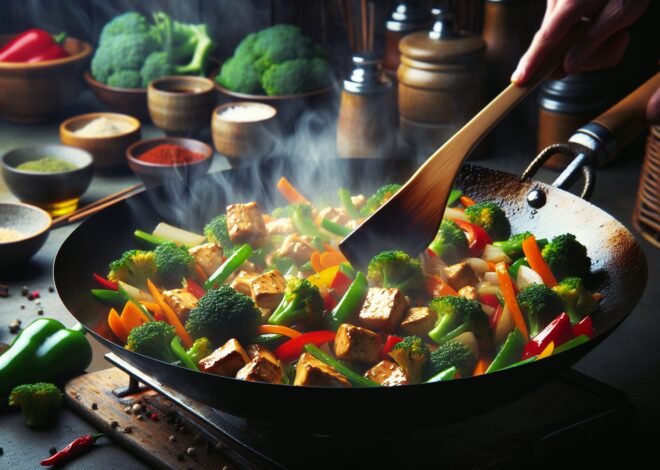
The Science of Oven Temperature: How Heat Affects Baking and Roasting
Oven temperature is a key factor in cooking and baking, and understanding it helps elevate your results. This guide explores the science behind oven temperatures, from caramelization to heat distribution, and how they affect different types of foods for perfect outcomes.
How Oven Temperature Affects Food
Oven temperature is more than just a number on the dial. It’s a crucial factor that alters the way food looks, tastes, and feels. Adjusting the temperature can transform a meal, unlocking flavors and textures that elevate a dish from ordinary to extraordinary.
Impact on Texture and Flavor
The texture and flavor of food are profoundly influenced by oven temperature. When heat is applied, the chemical reactions that occur can enhance or diminish the taste profile of your dish. High temperatures can create a crispy crust while keeping the inside tender. Whereas, low heat can result in a more uniform texture throughout.
Flavor development is largely dependent on these textures. A well-browned surface, achieved through higher heat, offers a complex, rich flavor. On the other hand, gentle heat preserves natural flavors, allowing subtler ingredients to shine. Thus, understanding the impact of temperature on texture and flavor is essential for culinary success.
Temperature’s Role in Moisture Retention
Moisture retention is a key aspect of cooking that is heavily influenced by temperature. Cooking at the right temperature ensures that moisture is locked in, preventing dryness. High temperatures can cause rapid moisture loss, while lower temperatures help in retaining it.
For foods like meat, maintaining moisture is vital for tenderness and juiciness. Vegetables, too, rely on moisture to stay flavorful and vibrant. Balancing temperature and time is crucial to prevent dehydration and ensure your dish is as enjoyable as possible.
Effects of High vs. Low Temperatures
The effects of high and low cooking temperatures are markedly different. High temperatures can lead to caramelization and browning, adding depth and complexity to flavors. These processes also create textures that delight the palate.
Conversely, low temperatures are ideal for slow cooking, which can enhance the natural flavors of ingredients. This method allows for even cooking, making it perfect for delicate dishes that require precision. Selecting the appropriate temperature can make or break your culinary creations.
Key Temperature Phases in Cooking
Cooking involves several critical temperature phases that impact the outcome of your dishes. Understanding these phases helps in mastering the art of cooking, ensuring perfect results every time. Let’s delve into these phases to discover how each one plays its part.
Maillard Reaction and Browning
The Maillard reaction is a cornerstone of cooking. This reaction occurs when proteins and sugars in food are exposed to heat, resulting in browning. It’s responsible for the savory flavors and appetizing aromas we associate with roasted meats, baked goods, and even coffee.
Browning enhances not only the visual appeal but also the flavor complexity of your dish. Achieving the perfect Maillard reaction requires precise temperature control, usually between 300°F to 350°F. This ensures that your food is cooked to perfection, with a beautiful golden crust.
Caramelization Temperature
Caramelization is another important phase, different from the Maillard reaction. It involves the oxidation of sugar and occurs at higher temperatures, around 320°F to 360°F. This process creates a sweet, nutty flavor profile, adding depth to both sweet and savory dishes.
Understanding caramelization is key to creating dishes with a rich, complex taste. From onions to sugar syrups, achieving the right caramelization can elevate your cooking to new heights. Temperature control is crucial to avoid burning and to ensure the flavors are perfectly balanced.
Cooking Proteins in Meats and Fish
Cooking proteins is an art and science that requires precision. The right temperature ensures that meats and fish are cooked safely while retaining their juiciness and flavor. High heat can lead to a tough, dry texture, while too low a temperature might not cook them through.
Each type of protein has an ideal temperature range. For example, beef is best cooked at 145°F for medium-rare, while fish requires a lower range to preserve its delicate texture. Mastering these temperature phases can make your meats and fish dishes shine.
Achieving Precision in Cooking
Precision is key to successful cooking. Achieving it requires the right tools and techniques. From measuring temperature accurately to adjusting your oven settings, precision ensures your culinary creations are flawless. Let’s explore how to achieve this in the kitchen.
Tools for Measuring Temperature
Using the right tools is essential for precision in cooking. A reliable thermometer is a chef’s best friend. Instant-read thermometers provide quick and accurate readings, ensuring that your food reaches the desired temperature without guesswork.
Oven thermometers help verify the internal temperature of your oven, ensuring it’s accurate. Infrared thermometers are perfect for surface temperatures, useful for grilling or making candies. Investing in quality temperature measuring tools can greatly enhance your cooking accuracy.
Adjusting Oven Calibration
Oven calibration is often overlooked, yet it’s crucial for consistent results. Over time, ovens can become miscalibrated, leading to inaccurate temperature readings. This can affect cooking times and the final outcome of your dishes.
Regularly check your oven’s temperature with an oven thermometer. If discrepancies are found, refer to the oven manual for recalibration instructions. This small adjustment can make a significant difference in cooking precision, helping you achieve perfect dishes every time.
Using Convection vs. Radiant Heat
Understanding the difference between convection and radiant heat is vital for precision cooking. Convection ovens use fans to circulate hot air, cooking food evenly and quickly. This is ideal for roasting and baking where even heat distribution is crucial.
Radiant heat, on the other hand, comes from the oven walls and is suitable for dishes requiring slow, gentle cooking. Knowing when to use each method can enhance your cooking results, providing the perfect balance of heat and texture for any dish.
Conclusion
Understanding the science behind oven temperature can transform your cooking experience, enabling you to achieve precise textures, flavors, and doneness. Temperature impacts moisture retention, the Maillard reaction for browning, and even how proteins set in meats. Knowing these interactions allows you to control the results more effectively and gives you insight into how heat affects various ingredients. With this knowledge, you can make informed decisions for each dish and even experiment with techniques like caramelization or roasting. Mastering oven temperature science empowers you to bring out the best in your recipes consistently.
FAQ
How does oven temperature affect cooking?
Oven temperature significantly influences the cooking process. High temperatures can create a crispy exterior while keeping the inside moist. Lower temperatures cook food more evenly but might lack that crisp finish. Adjusting temperature allows you to achieve the desired texture and doneness for various dishes.
What is the Maillard reaction?
The Maillard reaction is a chemical process that occurs when proteins and sugars in food are exposed to heat, resulting in browning and flavor development. This reaction is key in roasting, grilling, and baking, enhancing the taste and appearance of meats, bread, and other foods.
Why is caramelization important in cooking?
Caramelization is crucial because it adds depth and sweetness to dishes. When sugars in food are heated, they break down and form complex flavors and a golden-brown color. This process is essential in cooking vegetables, desserts, and sauces, contributing to a rich taste.
What temperatures are best for proteins?
Optimal temperatures for cooking proteins depend on the type. Chicken is best cooked at 165°F (74°C), while beef varies based on preference, typically between 125°F (52°C) for rare and 160°F (71°C) for well-done. Proper temperature ensures safety and desired texture.
Does oven temperature impact texture?
Yes, oven temperature affects texture. Higher temperatures often produce a crispier exterior, while lower temperatures result in a softer texture. Finding the right balance is essential for achieving the preferred consistency and taste in your dishes.
How do I know the right temperature for each food?
Determining the correct cooking temperature involves considering the food type and desired outcome. Guidelines and recipes often suggest optimal temperatures. Using a food thermometer ensures accuracy, especially for meats, ensuring they are cooked safely and to your liking.











